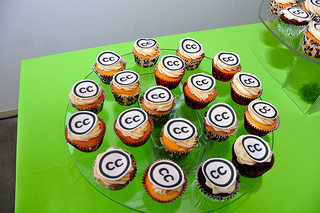Why do we cite?
We cite sources to
- Identify a work
- Give credit to the source of an idea
- Allow us, and others, to find the source
Doing so allows you to
- Avoid plagiarism
- Participate, and situate your voice, in a scholarly conversation
Caption vs Citation - How to give credit to original creator
Caption vs Citation
What is a Caption?
- A caption is used primarily to identify or describe an image and give credit to creator.
- A citation provides source information so that it can be reliably found and accessed by other scholars and researchers.
Captions can serve as both the caption and citation for images.
Location: The caption is located in proximity to an image, while the citation may appear as a footnote, endnote, bibliography or list of illustrations.
Image Caption Example
Caption Example
Caption - A caption appears typically below the image and serves to identify or describe the image and credit the source. It lets the person seeing the image confirm where it came from, know who created it and other details such as the date. There is no standard format for captions.
MODEL:
Architect/Designer, "Title of image." Type of illustration. Photographer (if applicable). Date of image. Edited (if applicable). From [Source], Source date. URL, (Date accessed).
EXAMPLE:

“Groundplan of the building committee's design.” Floorplan. From The Crystal palace, its architectural history and constructive marvels, 1851. https://www.gutenberg.org/files/44192/44192-h/44192-h.htm#f22 (accessed September 25, 2020).
Image Attribution (web, flyers, etc.) - Example
Attribution Example

"Creative Commons 10th Birthday Celebration San Francisco" by tvol is licensed under CC BY 2.0
Attribution components:
- Title: "Creative Commons 10th Birthday Celebration San Francisco"
- Author: "tvol" - linked to his profile page
- Source: "Creative Commons 10th Birthday Celebration San Francisco" - linked to original Flickr page
- License (if exists): "CC BY 2.0" - linked to license deed
Citation
Citation
Academic work including essays and papers require you to use a specific citation style (e.g., Chicago, APA, MLA) for bibliographies. Each style has a guide or manual advising how to format sources. If you are not sure what style to use, ask you instructor. Below are some examples for images.
- Cornell University Library Images Guide - Citing ImagesIncludes an example in APA style.
Citing Images with Chicago Manual of Style, 17th ed.
- Colgate University: Citing Images- Chicago StyleGuidelines and examples for citing images from print and online sources in Chicago Style.
Chicago Manual of Style (online)
In text
A caption may consist of a word or two, an incomplete or a complete sentence, several sentences, or a combination. There is no standard format. The goal is to identify the image, credit the creator and provide source information.

Figure 1. Dorothea Lange, “Black Maria” police van, 1957
MLA Image Caption Style

Fig. 1. Mary Cassatt, Mother and Child, ca. 1890. Wichita Art Museum. Toward an American Identity : Selections from the Wichita Art Museum Collection of American Art. By Novelene Ross. Wichita, Kan.: Wichita Art Museum, 1997. 107. Print.
Place images as close as possible to the parts of the text to which they relate. The image should be labeled as Figure (usually abbreviated Fig.), assigned an arabic numeral and given a caption. A label and title or caption ordinarily appear directly below the illustration and have the same one-inch margins as the text of the paper. Captions should be numbered consecutively.
Source: Gibaldi, Joseph. MLA Handbook for Writers of Research Papers. New York: Modern Language Association of America, 2009.
Art Bulletin Image Caption Style
The College Art Association's Art Bulletin style is a modification of the Chicago Manual of Style.
CAPTIONS
Captions should be numbered consecutively. Figure numbers do not include a period.
The Art Bulletin includes full caption information, whenever available and appropriate, in this order:
- Figure number with no period
- Artist
- Title (in italics)
- date
- medium on support
- dimensions in inches (h. x w. x d.) followed by dimensions in centimeters (1 inch = 2.54 cm)
- Name of collection
- City of collection
- Other collection information such as “gift of . . . ,” accession number, etc.
- Copyright or credit-line info regarding both the artwork and the photograph (in parentheses)

Caption written in AB Style:
1 Mary Cassatt, Mother and Child, ca 1890, Oil on canvas, 35 ½ x 25 3/8” (90.1 x 64.5 cm). Wichita Art Museum, Whichita, Kansas, Roland P. Murdock Collection, M109.53 ( © Wichita Art Museum 2002 )
Further examples and exceptions are available on CAA's Guidelines page under, Captions.